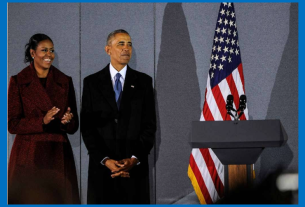In an industrial quarter outside Buenos Aires, a hummingbird hovers over a vibrant bed of plants and flowers. Two years ago, the area was a stretch of grey streets and factory units. Today, EU-funded researchers are bringing nature to urban Argentina, in a collaboration between European and Latin American cities.
The pavements of San Martín, in the Metropolitan Region of Buenos Aires, have been planted with beds known as rainwater gardens. Modest one-metre strips teem with plants and attract pollinators – butterflies, bees and other insects.
The benefits are evident for both nature and the community, explains Demián Rotbart, General Director of Urban Planning at the Municipality of San Martín, who worked with the University of Buenos Aires as part of an EU-funded research initiative called CONEXUS which concluded in August 2024.
“It’s a much better environment for people coming back and forth from the local university, and also for the factory workers. At noon, it’s full of workers having their lunch on the street. It’s a more interesting, revitalised environment, which is giving local people access to vegetation and green space in their neighbourhood,” he says.
Soaking up rainwater
The rainwater gardens incorporate the latest thinking in sustainable draining systems designed to capture runoff from roofs and pavements. It’s a nature-based solution to help manage storm water and the flash floods that are increasingly common in urban areas.
“Nature-based solutions are the green interventions we can deliver on the ground to tackle global environmental challenges, by bringing nature back into areas that are lacking green spaces,” said Tom Wild, coordinator of the CONEXUS research initiative and an expert in landscape ecology based at the University of Sheffield in the UK.
Analysis of the rainwater gardens shows they offer a cost-effective alternative to traditional infrastructure-based approaches to flooding. The researchers hope they can be scaled up to be part of a hybrid solution in Buenos Aires and other cities.
Restoring urban rivers
Evidence of their effectiveness is helping to deliver a forward-thinking vision for urban water management: to free urban waterways from their concrete channels and restore natural ecosystems, thereby helping to control flooding and reduce water pollution.
Restoring 25 000 kilometres of rivers to their former free-flowing state is a key goal of the European Green Deal’s Biodiversity Strategy for 2030.
“
The projects show that we can retrospectively fit nature-based solutions back into cities.
To invest in nature-based solutions and ecosystem restoration, cities and communities need solid evidence of long-term viability. From 2020 to 2024, the CONEXUS team gathered data on the impact and sustainability of a range of nature-based solutions from seven city projects in São Paulo, Bogotá, Santiago, Lisbon, Barcelona, Buenos Aires and Turin.
“The idea was that by working together, we have more of a palette of understandings, and also a greater set of inspirations for responses,” says Wild.
The researchers planted urban forests and protected wetlands, addressed urban heat and air quality improvement, and created and monitored the impact of green city spaces to grow food and become a source of social connection and recreation.
“The projects show that we can retrospectively fit nature-based solutions back into cities. There are things that we can do to adapt and respond to the world’s challenges, and that’s a much-needed message of hope,” says Wild.
Cooling cities through planting
In Turin in northern Italy, small urban spaces that were once used to store residential waste are now home to trees and plants. The busy Valdocco neighbourhood is dominated by roads and traffic, but the CONEXUS researchers worked with local authorities to create small-scale green spaces to improve quality of life for residents and school children.
Their work has helped combat the intense heat of the urban landscape, by providing tree canopy shade and releasing cooling moisture from plants – natural strategies that improve cities’ resilience against climate change.
Riccardo Saraco from the Municipality of Turin led the project and firmly believes that nature-based solutions should play a greater role in urban planning.
“They bring benefits, not only in terms of environmental impact, such as air quality, and making areas more liveable for people, but also in terms of new professional skills. It isn’t easy to find companies that can implement a green wall or a green roof, and there are opportunities here to create new sustainable jobs,” he said.
Blueprints for green change
Lessons learned from the CONEXUS research team are feeding into another EU-funded initiative. NetworkNature has set out to make the blueprints of nature-based solutions easily accessible to everyone involved in shaping the future of cities.
“
Nature-based solutions alone cannot solve everything, but we cannot solve things without them.
NetworkNature is currently in its second phase, NetworkNaturePlus, which will run until 2027. The NetworkNature team is drawing together more than 90 EU-funded projects that incorporate nature-based solutions and making their knowledge publicly available through online databases.
The coordinator of NetworkNature is Dr Daniela Rizzi, whose background is in architecture and urban planning. Having studied in São Paulo, she witnessed firsthand the pollution and degradation of the city’s rivers and is passionate about nature-based solutions.
“I think they are the past, present and future. We really need them to solve the crisis that we have. Nature-based solutions alone cannot solve everything, but we cannot solve things without them,” she said.
NetworkNature is an online resource designed to inspire stakeholders in Europe and beyond by sharing knowledge, tools and best practices on nature-based solutions. Coordinated by ICLEI – Local Governments for Sustainability, a global network of over 2 500 local and regional governments dedicated to sustainable urban development – it connects experts, policymakers, practitioners and researchers.
Planning for the future
Rizzi hopes that through policy briefings, workshops and webinars, they will drive the adoption of nature-based solutions and influence policy, to shape financing and resource allocation.
“It’s not just about building capacity of how to implement nature-based solutions,” she said. “We have to go a step further and influence policy and regulations.”
This is because policy sets the tone for financing and funding, and Rizzi believes that it is key to making real change happen.
“It’s so important, and if we don’t push, governments, businesses and communities will continue with business as usual.”
In Rizzi’s view, the growing body of evidence from these projects proves that nature-based solutions are not just a vision for the future, but a practical, scalable reality – offering hope, resilience and a sustainable path forward for ecosystems and people worldwide.
Research in this article was funded by the EU’s Horizon Programme. The views of the interviewees don’t necessarily reflect those of the European Commission. If you liked this article, please consider sharing it on social media.



